

Zinnia Flowers: A Comprehensive Guide to Growing and Caring for These Vibrant Blooms
Introduction
Zinnia flowers brighten any garden with their colorful blooms. These easy-to-grow plants are a favorite among gardeners. They not only add beauty but also attract bees and butterflies. Plus, zinnias are fantastic as cut flowers, adding cheer to your home.
If you’re looking to start your zinnia journey, a Zinnia Seeds Variety Pack is a fantastic way to dive into the mesmerizing world of zinnias. With a variety of colors and types, you can create a vibrant garden that will have your neighbors green with envy!
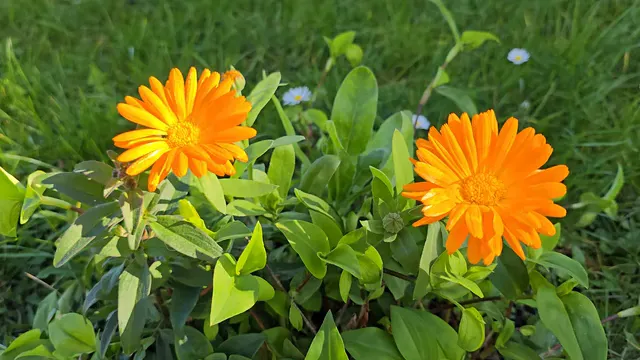
Summary and Overview
Zinnias boast a rich history, originating in Mexico and Central America. They have become a staple in gardens worldwide. With a wide variety of colors and shapes, zinnias are sure to please any gardener. You can find them in vibrant reds, yellows, pinks, and more, making them a visual delight.
These flowers are low maintenance and drought-resistant, making them perfect for busy gardeners. They thrive in sunny spots and can handle dry spells, which means less work for you. Zinnias are also known for attracting pollinators like butterflies and bees, supporting local ecosystems.
Their versatility shines through in garden design. You can use zinnias as border plants, in mixed flower beds, or as eye-catching cut flowers in arrangements. Whether you want to enhance your garden or enjoy fresh blooms indoors, zinnias are an excellent choice. For those with limited space, consider exploring container gardening ideas for small spaces to incorporate zinnias effectively.
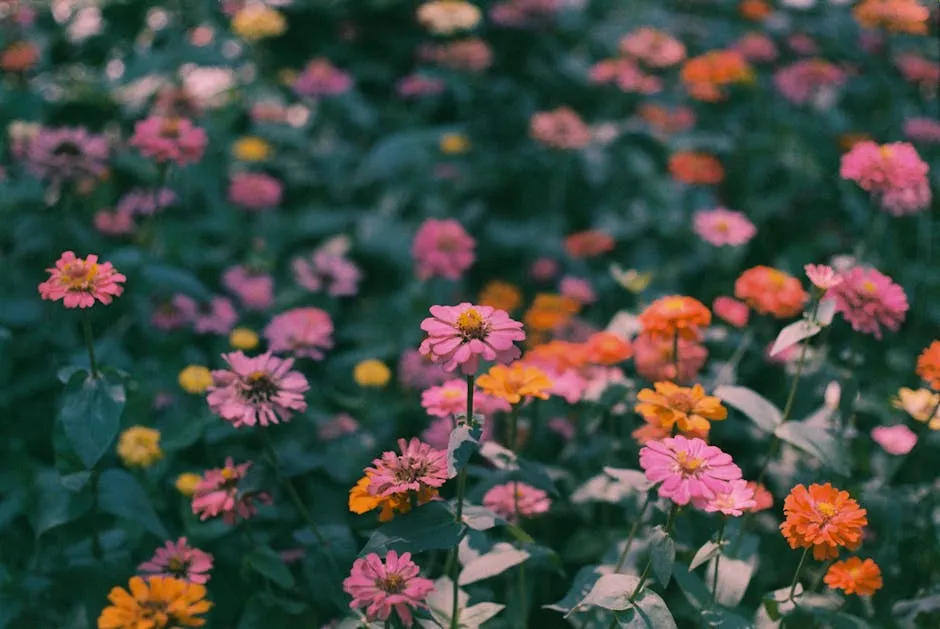
To ensure your zinnias flourish, having the right tools is essential. A Garden Trowel Set can help you dig, plant, and nurture your zinnias like a pro. With the right tools, gardening becomes not only easier but also a lot more fun!
Container gardening is a great way to maximize your space while enjoying the beauty of zinnias. Learn more about container gardening ideas for small spaces.
Growing Zinnias: Essential Tips
When to Plant
Timing is crucial for zinnias. Optimal planting times depend on your USDA Hardiness Zone. Generally, wait until the soil temperature hits around 70°F for the best results. This warmth ensures the seeds germinate quickly. For example, in zones 5b to 6a, aim to plant zinnias in early June after the last frost. Checking local frost dates will help you decide the perfect planting window.

Best Soil Conditions for Zinnias
Zinnias thrive in well-drained soil. They prefer a pH level between 5.5 and 7.5, which is slightly acidic to neutral. To improve your soil, mix in organic compost before planting. This not only provides nutrients but also enhances drainage. If your soil tends to hold water, consider adding sand or perlite. These amendments will help prevent root rot, keeping your zinnias healthy and vibrant.
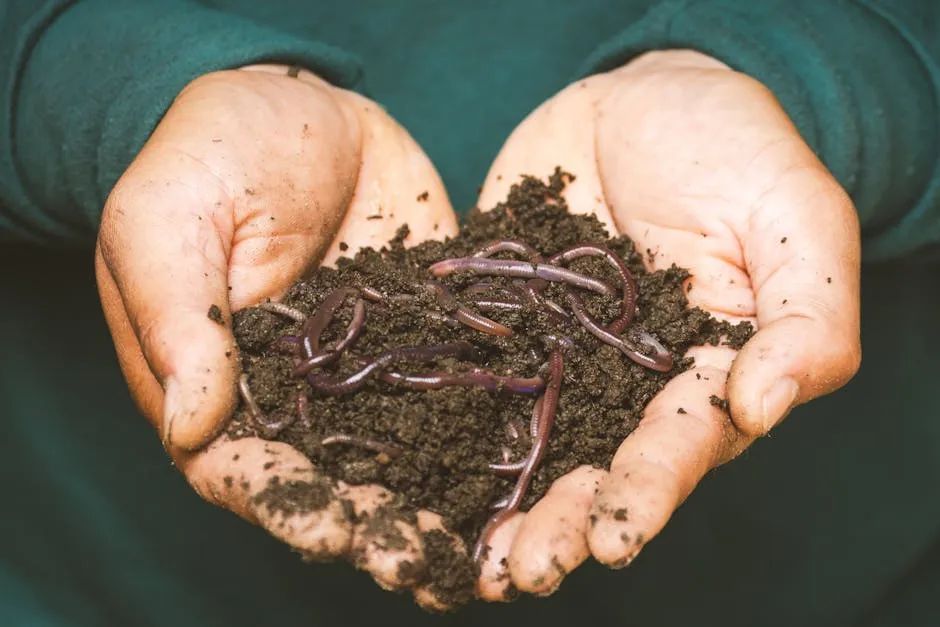
Watering and Fertilization
Zinnias need consistent moisture, especially during dry spells. Water deeply once a week, aiming for about one inch of water. It’s best to water at the base of the plant to avoid wetting the foliage, which can lead to diseases. Fertilizing is straightforward. Use a balanced fertilizer at planting time, then apply a phosphorus-rich fertilizer monthly. This strategy encourages abundant blooms throughout the season.
Sunlight Requirements
Full sun is essential for thriving zinnias. They require at least 8 hours of direct sunlight each day. Adequate sunlight promotes healthy growth and vibrant flowers. If zinnias don’t receive enough light, you might notice leggy plants with fewer blooms. Position them in sunny spots to ensure they get the light they crave. With the right conditions, your zinnias will flourish and brighten your garden.
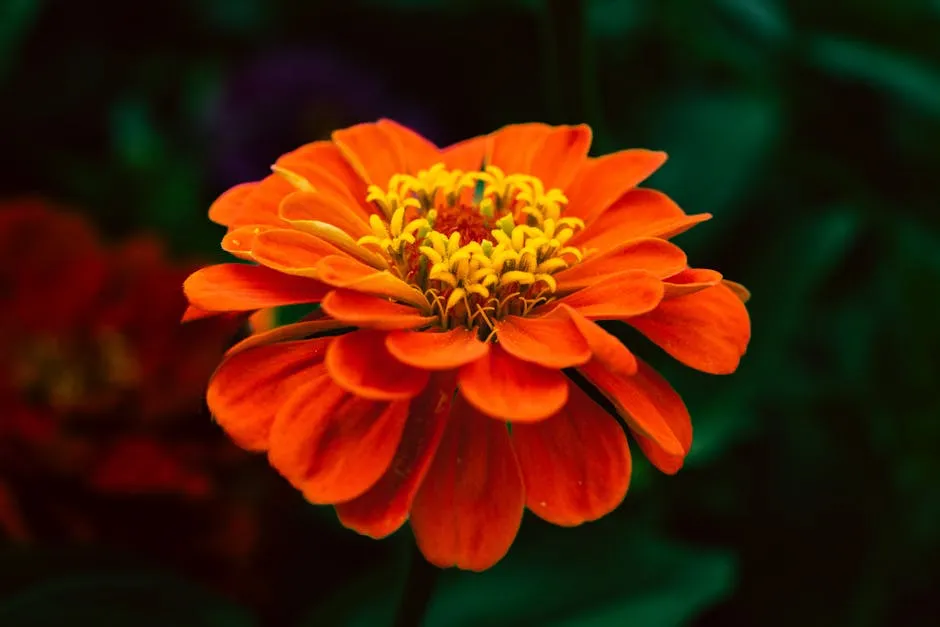
Types of Zinnias
Overview of Varieties
Zinnias come in a delightful array of types, showcasing their diversity. You can find single, double, and semi-double blooms. Single zinnias have one row of petals, while double varieties boast multiple layers. Semi-double blooms strike a balance, featuring visible centers with several petals. This variety adds texture and interest to any garden, making zinnias a fantastic choice for flower enthusiasts. Their adaptability allows you to mix and match types for a stunning display.
Notable Cultivars
Zinnias come in various stunning cultivars, each with unique features.
Benary’s Giant is a favorite among gardeners. This variety boasts large, vibrant blooms that can reach 3 inches across. They thrive in sunny conditions, making them perfect for creating a colorful garden display.
Next up, the Zahara Series stands out for its disease resistance and low water needs. This series includes a range of colors and maintains a compact growth habit. They’re particularly great for busy gardeners.
The Magellan Series is another excellent choice. These zinnias stay relatively short at about 14 inches tall, making them ideal for borders or containers. Their bright colors attract pollinators, adding life to your garden.
Lastly, the Queen Lime Series adds an unexpected twist. With lime green centers and soft coral petals, these zinnias offer a unique color palette. Their elegant look complements any garden design, making them a must-try.
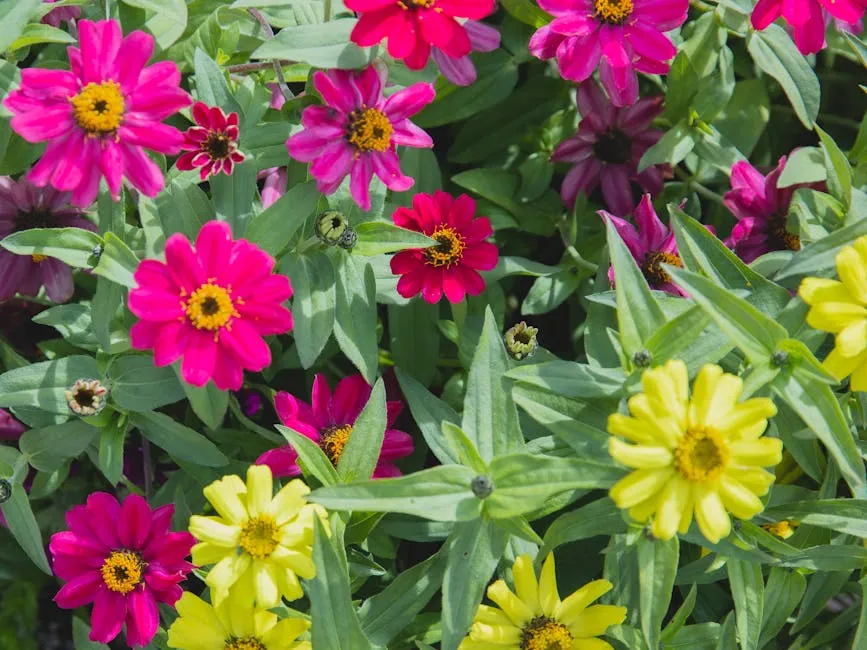
Color and Size Variations
Zinnias are famous for their vibrant colors and diverse sizes. You can find them in nearly every shade, from fiery reds to sunny yellows and soft pinks. Some cultivars even feature bi-color or tri-color blooms, adding dimension to your garden.
When it comes to size, zinnias range from petite 2-inch flowers to the impressive 3-inch blooms of Benary’s Giant. This variety allows you to create stunning displays with varying heights and colors. Mixing different zinnias can result in a visually captivating garden that blooms throughout the summer.
Zinnia Care and Maintenance
Pest and Disease Management
While zinnias are generally hardy, they can face some challenges. Powdery mildew is a common issue, especially in humid conditions. To prevent this, ensure there’s good airflow around your plants. Space them out properly and avoid overhead watering. If mildew appears, remove infected leaves immediately.
Other pests like aphids and spider mites can also be problematic. Regularly inspect your plants for signs of infestation. If you spot pests, use insecticidal soap or neem oil for control. Keeping your zinnias healthy and hydrated will also make them less susceptible to these pests.
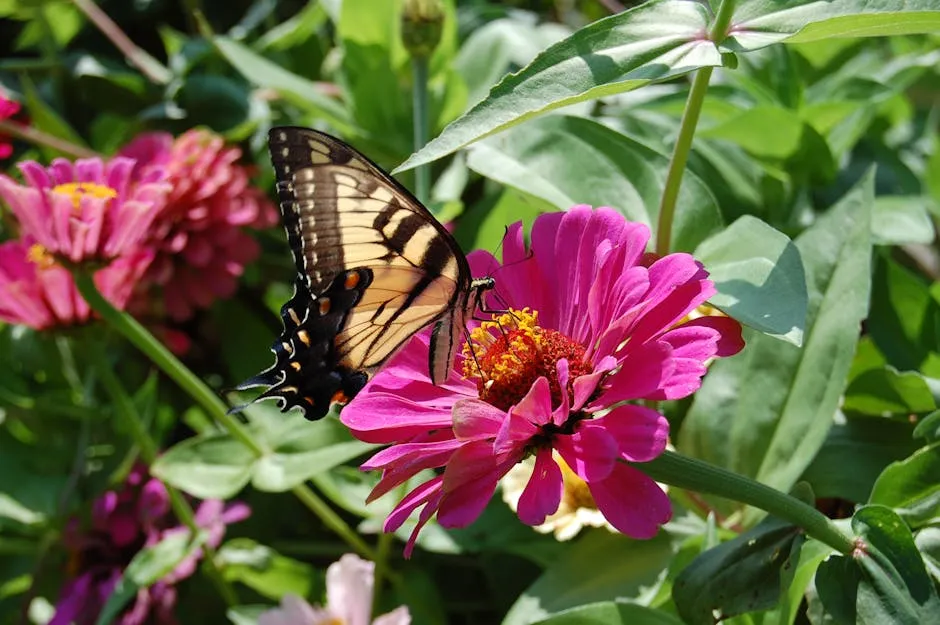
Pruning and Deadheading
Pruning zinnias encourages bushier growth and more blooms. When your plants reach about 12 inches, pinch back the tips. This simple step helps promote branching, leading to a fuller appearance.
Deadheading is equally important. Regularly remove spent flowers to encourage continuous blooming. This process redirects the plant’s energy into producing new flowers rather than seed production. With consistent deadheading, your zinnias will reward you with vibrant blooms all season long.
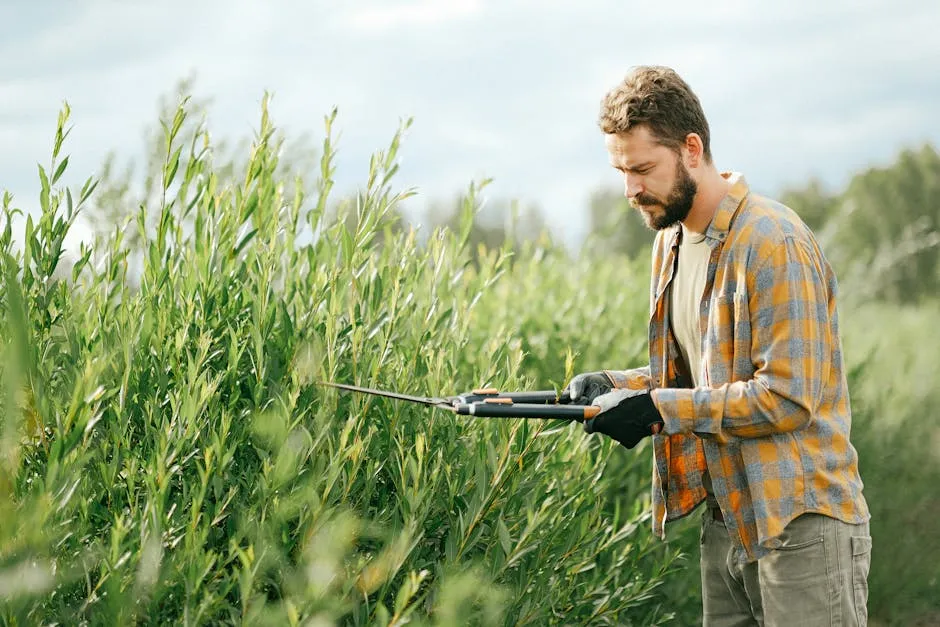
Seasonal Care
Caring for zinnias changes with the seasons. In spring, plant the seeds after the last frost. Prepare the soil by adding organic compost to enhance drainage and nutrients.
During summer, monitor your zinnias closely. Water them deeply once a week, especially during dry spells. If you notice any wilting, consider watering more frequently.
As autumn approaches, it’s time for clean-up. Remove any dead or diseased foliage to prevent overwintering pests. If you’re interested in next year’s blooms, let some flowers go to seed. Collect and store seeds in a cool, dry place. This simple practice ensures you can enjoy zinnias in your garden for years to come.
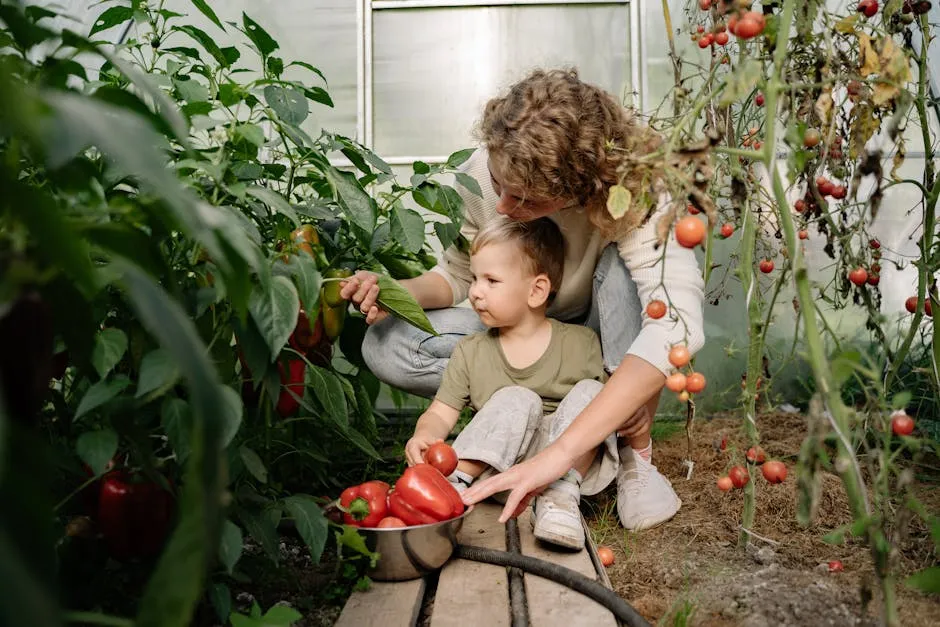
Attracting Pollinators with Zinnias
Importance of Pollinators
Zinnias play a vital role in supporting local ecosystems. These flowers are a favorite among butterflies and bees, providing essential nectar. By planting zinnias, you help sustain these important pollinators. As they visit your garden, they also promote the pollination of other plants. This contributes to a healthier and more diverse garden. Encouraging pollinators can even enhance your vegetable and fruit yields.

Best Varieties for Pollinator Gardens
Some zinnia varieties are particularly attractive to pollinators. The Benary’s Giant series, with its large, colorful blooms, draws in many butterflies. Zahara series zinnias are also excellent choices, known for their drought resistance and vibrant colors. Their compact growth makes them perfect for small spaces. Additionally, the Magellan Series features shorter plants that are easy to incorporate into any garden. By choosing these varieties, you create a lively and buzzing habitat for these essential creatures.
Conclusion
Zinnias are a fantastic addition to any garden. They bring vibrant colors and charm, requiring minimal care. Plus, they support local wildlife, attracting butterflies and bees. Growing zinnias is a rewarding experience for both novice and seasoned gardeners. So, why not give it a try? You’ll enjoy their beauty and the joy they bring to your outdoor space. Don’t forget to share your zinnia experiences or photos with us! We love to see your colorful creations.

And speaking of outdoor spaces, have you considered a Garden Kneeler and Seat? It’s perfect for those long hours of tending to your beloved plants while keeping your knees happy and your back straight!
FAQs
What are the best conditions for growing zinnia flowers?
Zinnias thrive in full sun, needing at least 8 hours of direct light daily. They prefer well-drained soil with a pH between 5.5 and 7.5. Water them weekly, aiming for about an inch of moisture. Avoid wetting the leaves to prevent diseases. With these conditions, zinnias flourish and produce stunning blooms.
How do I prevent diseases in my zinnia plants?
To keep zinnias healthy, ensure good air circulation by spacing them properly. Water at the base of the plants, avoiding overhead watering. Watch for signs of powdery mildew, a common issue. If you see it, remove affected leaves immediately. Regularly inspect your plants and maintain clean soil to reduce disease risk.
Can zinnias be grown in containers?
Yes, zinnias adapt well to container gardening! Choose a pot with good drainage and fill it with well-draining soil. Ensure that your container receives plenty of sunlight. Smaller varieties, like the Magellan Series, work particularly well in pots. They’ll brighten up patios and balconies beautifully.
What is the best way to deadhead zinnias?
Deadheading zinnias is simple and beneficial. Use sharp scissors to remove spent blooms just above a leaf node. This encourages the plant to produce more flowers instead of seeds. Regular deadheading keeps your zinnias looking fresh and vibrant throughout the growing season.
Are zinnias annual or perennial flowers?
Zinnias are annual flowers, meaning they complete their lifecycle in one growing season. They grow from seed, bloom, set seeds, and die off. To enjoy zinnias year after year, collect seeds from your plants at the end of the season. Store them in a cool, dry place for planting the next spring.
How do I collect zinnia seeds for the next growing season?
To collect zinnia seeds, wait until the flowers dry completely on the stem. Once dry, carefully cut the seed heads and place them in a paper bag. Gently crush the heads to release the seeds. Store them in a cool, dry location to keep them viable for the next growing season. This simple process ensures you can enjoy zinnias again!
Please let us know what you think about our content by leaving a comment down below!
Thank you for reading till here 🙂
All images from Pexels



